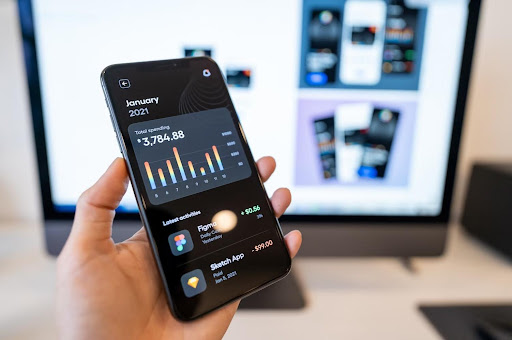In the recent world of digital transformation, mobile apps are becoming increasingly popular, and for a good reason. They can significantly enhance user experience, provide access to valuable information, and be a powerful marketing tool. However, mobile app development is not without its risks. Native mobile app development involves the use of specific programming languages and platforms that come with their own unique set of challenges. We will outline some of the hidden risks associated with native mobile app development in this article so you can make an informed decision when choosing which type of development strategy to pursue. We’ll also explore some potential solutions that can help mitigate these risks and ensure successful project delivery. By understanding these issues ahead of time, you’ll be able to plan your software development solutions accordingly and avoid costly mistakes in the future.

What is a native mobile app?
A native mobile app is a type of software application developed specifically for use on a certain device or platform, such as iOS or Android. Native apps are built using the device’s operating system and programming language, which makes them highly reliable and well-optimized for that particular environment. They also allow users to take advantage of the full range of features and capabilities provided by their devices.
Top challenges and risks when developing native mobile apps
Long development times
One risk associated with native mobile app development is its long development time. Because each platform requires its own codebase, it can be time-consuming to build an app that supports multiple platforms simultaneously. Additionally, debugging native apps can be challenging due to the complexity of their underlying architectures and dependencies. This can lead to delays in project delivery and an overall rise in development costs.
Platform limitations
Another risk is the limitations imposed by each platform’s specific requirements. This can make it difficult to develop an app that works across multiple operating systems or device types, as certain features may not be available on every platform. Furthermore, some platforms may impose restrictions on how apps are designed and require additional workarounds to accommodate their specifications.
Security concerns
Mobile applications store and handle sensitive data such as user information and credentials, financial information, and personal data. This makes them an appealing target for cybercriminals. The security of the mobile application is a critical aspect that must be considered during development.
A poorly developed mobile app can lead to security vulnerabilities such as data breaches, malicious code injections, and other types of cybersecurity threats. With an app’s security breaches, criminals may steal data, install malware, or modify the code.
It is critical to perform thorough security testing and penetration testing before releasing the mobile application to the public. Security testing helps identify vulnerabilities and recommends a course of action to address them. Meanwhile, penetration testing involves simulating an attack on the mobile application to identify its weaknesses.
Performance risks
Performance is a critical aspect of mobile app development, and it is often overlooked or sidelined in pursuit of functionality. A mobile app with poor performance either hangs or crashes, making it frustrating for users. Users are likely to abandon the app if they experience poor performance.
Performance risks may occur due to various factors such as on-device storage, network connectivity, and device limitations. Developers should consider these factors during development and perform load testing and stress testing to ensure the app can handle maximum user loads.
Integration risks
Mobile applications do not work in isolation; they require integration with other applications, APIs, and databases. Integration risks occur when the mobile application fails to communicate efficiently with other systems, leading to faulty data exchange, inconsistent user experience, and other issues.
Developers should have a clear understanding of the APIs they are using and their limitations. They should also perform continuous integration testing to ensure the app is communicating with other systems correctly.
User experience risks
A mobile application’s user experience is critical to its success. A mobile app with a poor user experience may not attract as many users, and users who do use it may abandon it quickly. On the other hand, an app with excellent user experience is likely to attract more users and keep them engaged for longer periods.
User experience risks occur when the app does not provide the users with the functionality they desire, the app is difficult to use, or the app lacks features that users consider essential. Developers should understand their users’ needs and perform usability testing to ensure the app provides a seamless user experience.
Maintenance risks
Mobile application development is not a one-off process. After releasing the app, developers must maintain it and release updates to keep up with changing market needs and new operating system versions.
Continuous maintenance may lead to issues such as cost, dependency on specific experts, and redeployment challenges. Developers should use efficient maintenance processes and continuous delivery processes to mitigate maintenance risks. They should also ensure they have a flexible architecture that allows easy integration with future technology.
Mitigating the risks of native mobile app development

The risks associated with native mobile app development can be mitigated through proper planning and a well-defined set of processes and best practices. This includes designing an application architecture that can easily accommodate multiple platforms, making use of automated testing tools to minimize manual debugging efforts, and taking advantage of available security frameworks to ensure data safety. Additionally, by thoroughly researching each platform’s requirements before beginning development, developers will have a better understanding of any potential issues they may encounter during the project.
In conclusion, native mobile app development carries certain risks that should be considered before embarking upon a project. Fortunately, these risks can be mitigated through proper planning and adherence to best practices. By understanding these risks ahead of time and taking steps to mitigate them appropriately, you can reduce your chances of facing costly delays or other problems throughout the mobile app development process.
You may be interested in: Performance Marketing The Need of the Hour

